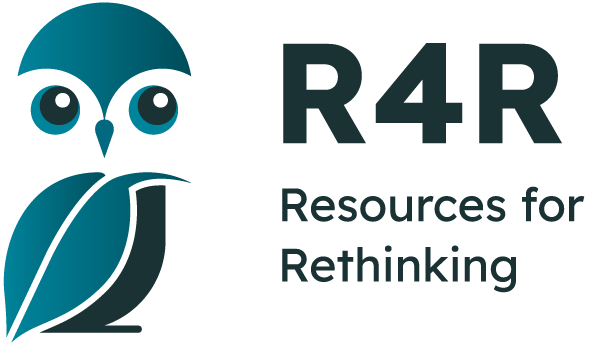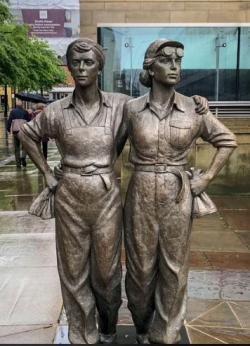- Home
- Tutorial
- Resource Guides
- Focus Areas
- LSF Programs
-
Professional
Development - Review Process
-
A project of LSF

Search for Resources
Description
A Picture is Worth 1,000 Words is a lesson plan designed for middle school students in preparation for Martin Luther King, Jr. Day. The students will use visual literacy skills to analyze the components and message of an image. They will listen carefully and seek to understand the different opinions and perspectives of their classmates. The students will identify issues that are meaningful to them and create a simple image and text to communicate a message that causes others to think.
In this resource, students will:
- use visual literacy thinking skills to explore the meaning and emotions presented in an art image
- discuss ways to listen with generosity to value others' perspectives
- identify a difficult issue that they care about
- examine the elements of design and language to communicate effectively
- create an image and text to advocate for a position
The resource provides optional activities to enhance the learning.
General Assessment
What skills does this resource explicitly teach?
In this resource, students are taught explicitly how to listen with kindness and how to use visual literacy skills to analyze the components and the message of an image.
Strengths
- All the instructions to complete this lesson are clear in the resource
- Optional handouts are available to extend the activities
- Background information is available to teachers
Weaknesses
- Even though the resource is available to view online, you need to register to get the extra handouts
- Lack of assessment tools
- No strategies for learners with difficulties are provided
Recommendation of how and where to use it
The lesson is meant to be used at the middle school level in preparation for Martin Luther King, Jr. Day. This lesson would be excellent in a visual arts class with a focus on citizenship.
Relevant Curriculum Units
The following tool will allow you to explore the relevant curriculum matches for this resource. To start, select a province listed below.
- Step 1Select a province
- Alberta
- Step 2Select a grade level
- Grade 6
- Step 3Select a subject
- Visual Art
- Step 4Relevant matches
- Visual Arts
- Grade 7
- Step 3Select a subject
- Arts
- Step 4Relevant matches
- Arts: Visual Art
- Grade 8
- Step 3Select a subject
- Visual Art
- Step 4Relevant matches
- Visual Art: Drawings
- Visual Arts: Compositon
- British Columbia
- Step 2Select a grade level
- Grade 6
- Step 3Select a subject
- Arts
- Step 4Relevant matches
- Arts Education: Dance, drama, music, and visual arts are each unique languages for creating and communicating.
- Arts Education: Engaging in creative expression and experiences expands people’s sense of identity and community.
- Arts Education: Experiencing art is a means to develop empathy for others’ perspectives and experiences
- Grade 7
- Step 3Select a subject
- Arts
- Step 4Relevant matches
- Experiencing art challenges our point of view and expands our understanding of others
- Arts Education
- Arts Education: Dance, drama, music, and visual arts are each unique languages for creating and communicating
- Arts Education: Engaging in the arts develops people’s ability to understand and express complex ideas
- Grade 8
- Step 3Select a subject
- Arts
- Step 4Relevant matches
- Arts Education: Artists often challenge the status quo and open us to new perspectives and experiences.
- Arts Education: Dance, drama, music, and visual arts are each unique languages for creating and communicating.
- Arts Education: Individual and collective expression can be achieved through the arts.
- Grade 9
- Step 3Select a subject
- Arts
- Step 4Relevant matches
- Arts Education: Creative arts experiences can build community and nurture relationships with others.
- Arts Education: Dance, drama, music, and visual arts each use their own unique sensory language for creating and communicating.
- Manitoba
- New Brunswick
- Step 2Select a grade level
- Grade 6
- Step 3Select a subject
- Social Studies
- Step 4Relevant matches
- Cultures
- Empowerment: Economics
- Atlantic Canada and the World:
- Visual Art
- Step 4Relevant matches
- Communicate
- Connect
- Create
- Grade 7
- Step 3Select a subject
- Visual Art
- Step 4Relevant matches
- Communicate
- Create
- Grade 8
- Step 3Select a subject
- Visual Art
- Step 4Relevant matches
- Communicate
- Connect
- Create
- Newfoundland & Labrador
- Step 2Select a grade level
- Grade 6
- Step 3Select a subject
- Social Studies
- Step 4Relevant matches
- An Introduction to Culture
- World Issues
- Visual Art
- Step 4Relevant matches
- Art: Creating, Making, and Presenting
- Art: Understanding and Connecting Contexts of Time, Place, and Community
- Art:Perceiving, Reflecting, and Responding
- Grade 7
- Step 3Select a subject
- Arts
- Step 4Relevant matches
- Creating, Making and Presenting
- Visual Art
- Visual Art: Perceiving,Reflecting and Responding
- Grade 8
- Step 3Select a subject
- Arts
- Step 4Relevant matches
- Creating, Making and Presenting
- Visual Art
- Visual Art: Perceiving,Reflecting and Responding
- Northwest Territories
- Step 2Select a grade level
- Grade 6
- Step 3Select a subject
- Arts
- Step 4Relevant matches
- Arts Education: Dance, drama, music, and visual arts are each unique languages for creating and communicating.
- Arts Education: Engaging in creative expression and experiences expands people’s sense of identity and community.
- Arts Education: Experiencing art is a means to develop empathy for others’ perspectives and experiences
- Grade 7
- Step 3Select a subject
- Arts
- Step 4Relevant matches
- Experiencing art challenges our point of view and expands our understanding of others
- Arts Education
- Arts Education: Dance, drama, music, and visual arts are each unique languages for creating and communicating
- Arts Education: Engaging in the arts develops people’s ability to understand and express complex ideas
- Grade 8
- Step 3Select a subject
- Arts
- Step 4Relevant matches
- Arts Education: Artists often challenge the status quo and open us to new perspectives and experiences.
- Arts Education: Dance, drama, music, and visual arts are each unique languages for creating and communicating.
- Arts Education: Individual and collective expression can be achieved through the arts.
- Grade 9
- Step 3Select a subject
- Arts
- Step 4Relevant matches
- Arts Education: Creative arts experiences can build community and nurture relationships with others.
- Arts Education: Dance, drama, music, and visual arts each use their own unique sensory language for creating and communicating.
- Nova Scotia
- Step 2Select a grade level
- Grade 6
- Step 3Select a subject
- Social Studies
- Step 4Relevant matches
- Social Studies 6: An Introduction to Culture
- Social Studies 6: World Issues
- Visual Art
- Step 4Relevant matches
- Visual Arts 6 Analyse
- Grade 7
- Step 3Select a subject
- Visual Art
- Step 4Relevant matches
- Visual Arts 7: Analyzing Art
- Visual Arts 7: Creating Art
- Visual Arts 7: Responding to Art
- Grade 8
- Step 3Select a subject
- Social Studies
- Step 4Relevant matches
- Social Studies 8 - A Changing Canadian Society: Advocacy and Action
- Visual Art
- Step 4Relevant matches
- Visual Arts 8: Analyzing Art
- Visual Arts 8: Creating Art
- Visual Arts 8: Responding to Art
- Nunavut
- Step 2Select a grade level
- Grade 6
- Step 3Select a subject
- Arts
- Step 4Relevant matches
- Arts Education 6: Creative/Productive
- Arts Education 6: Critical/Responsive
- Grade 7
- Step 3Select a subject
- Arts
- Step 4Relevant matches
- Arts Education 7: Creative/Productive
- Arts Education 7: Critical/Responsive
- Grade 8
- Step 3Select a subject
- Arts
- Step 4Relevant matches
- Arts Education 8: Creative Productive
- Arts Education 8: Critical/Responsive
- Ontario
- Prince Edward Island
- Step 2Select a grade level
- Grade 6
- Step 3Select a subject
- Social Studies
- Step 4Relevant matches
- An Introduction to Culture
- World Issues
- Visual Art
- Step 4Relevant matches
- Visual Art: Exploring Forms and Cultural Contexts
- Visual Art: Reflecting, Responding, and Analysing
- Visual Arts: Creating and Presenting
- Grade 7
- Step 3Select a subject
- Visual Art
- Step 4Relevant matches
- Visual Arts: Drawing Unit
- Grade 8
- Step 3Select a subject
- Visual Art
- Step 4Relevant matches
- Visual Arts: Drawing Unit
- Quebec
- Step 2Select a grade level
- Grade 6
- Step 3Select a subject
- Arts
- Step 4Relevant matches
- Arts: Visual Arts: To produce individual works in the visual arts
- Arts: Visual Arts: To appreciate works of art, media images, personal productions and those of classmates
- Grade 7
- Step 3Select a subject
- Arts
- Step 4Relevant matches
- Arts: Visual Arts: Creates personal images
- History & Citizenship Education
- Step 4Relevant matches
- Winning of Civil Rights & Freedoms
- Grade 8
- Step 3Select a subject
- Arts
- Step 4Relevant matches
- Arts: Visual Arts: Creates personal images
- History & Citizenship Education
- Step 4Relevant matches
- Winning of Civil Rights & Freedoms
- Saskatchewan
- Step 2Select a grade level
- Grade 6
- Step 3Select a subject
- Arts
- Step 4Relevant matches
- Arts Education 6: Creative/Productive
- Arts Education 6: Critical/Responsive
- Grade 7
- Step 3Select a subject
- Arts
- Step 4Relevant matches
- Arts Education 7: Creative/Productive
- Arts Education 7: Critical/Responsive
- Grade 8
- Step 3Select a subject
- Arts
- Step 4Relevant matches
- Arts Education 8: Creative Productive
- Arts Education 8: Critical/Responsive
- Arts Education: Dance, drama, music, and visual arts are each unique languages for creating and communicating.
- Yukon Territory
- Step 2Select a grade level
- Grade 6
- Step 3Select a subject
- Arts
- Step 4Relevant matches
- Arts Education: Dance, drama, music, and visual arts are each unique languages for creating and communicating.
- Arts Education: Engaging in creative expression and experiences expands people’s sense of identity and community.
- Arts Education: Experiencing art is a means to develop empathy for others’ perspectives and experiences
- Grade 7
- Step 3Select a subject
- Arts
- Step 4Relevant matches
- Experiencing art challenges our point of view and expands our understanding of others
- Arts Education
- Arts Education: Dance, drama, music, and visual arts are each unique languages for creating and communicating
- Arts Education: Engaging in the arts develops people’s ability to understand and express complex ideas
- Grade 8
- Step 3Select a subject
- Arts
- Step 4Relevant matches
- Arts Education: Artists often challenge the status quo and open us to new perspectives and experiences.
- Arts Education: Dance, drama, music, and visual arts are each unique languages for creating and communicating.
- Arts Education: Individual and collective expression can be achieved through the arts.
- Grade 9
- Step 3Select a subject
- Arts
- Step 4Relevant matches
- Arts Education: Creative arts experiences can build community and nurture relationships with others.
- Arts Education: Dance, drama, music, and visual arts each use their own unique sensory language for creating and communicating.
Themes Addressed
Citizenship (1)
- Community-Building and Participation
Human Rights (2)
- Cultural Diversity
- Social Justice
Sustainability Education Principles
| Principle | Rating | Explanation |
|---|---|---|
| Consideration of Alternative Perspectives | Very Good | This whole lesson is centered around issues of justice, fairness, and respect for differences. Throughout the lesson, students are encouraged to share their point of view and listen to others point of view. |
Consideration of Alternative Perspectives:
| ||
| Multiple Dimensions of Problems & Solutions | Satisfactory | |
| Multiple Dimensions of Problems & Solutions: Effectively addresses the environmental, economic and social dimensions of the issue(s) being explored.
| ||
| Respects Complexity | Good | |
| Respects Complexity: The complexity of the problems/issues being discussed is respected. | ||
| Acting on Learning | Good | Students will create a poster or a meme that promotes the importance of treating everyone with respect, justice, and fairness. The posters will then be put up around the school and/or on social media. |
| Acting on Learning: Learning moves from understanding issues to working towards positive change — in personal lifestyle, in school, in the community, or for the planet
| ||
| Values Education | Very Good | Students consistently get a chance to share their own opinions and their own beliefs through discussions and also during the creation of their poster. |
| Values Education: Students are explicitly provided with opportunities to identify, clarify and express their own beliefs/values. | ||
| Empathy & Respect for Humans | Very Good | In this resource students are taught to discuss ways to listen with generosity to value others' perspectives. As well this resource has a focus on issues of justice, fairness, and respect for differences. |
| Empathy & Respect for Humans: Empathy and respect are fostered for diverse groups of humans (including different genders, ethnic groups, sexual preferences, etc.). | ||
| Personal Affinity with Earth | Poor/Not considered | This is not a focus of this resource |
| Personal Affinity with Earth: Encourages a personal affinity with -the natural world.
| ||
| Locally-Focused Learning | Good | Students will be creating posters to showcase in their school therefore the learning experiences will be relevant in their community. |
| Locally-Focused Learning: Includes learning experiences that take advantage of issues/elements within the local community.
| ||
| Past, Present & Future | Good | |
| Past, Present & Future: Promotes an understanding of the past, a sense of the present, and a positive vision for the future. | ||
Pedagogical Approaches
| Principle | Rating | Explanation |
|---|---|---|
| Open-Ended Instruction | Very Good | Students get to share their opinions without the fear of being judged as this is the goal of this lesson. Students get to create their own posters about an issue that is important to them. |
| Open-Ended Instruction
: Lessons are structured so that multiple/complex answers are possible; students are not steered toward one 'right' answer. | ||
| Integrated Learning | Good | This lesson has a focus on visual arts but you could easily use it in language arts classes as well as social studies classes that promote citizenship. |
| Integrated Learning: Learning brings together content and skills from more than one subject area
| ||
| Inquiry Learning | Satisfactory | |
| Inquiry Learning: Learning is directed by questions, problems, or challenges that students work to address.
| ||
| Differentiated Instruction | Good | The variety of the activities in this lesson address the needs of visual, auditory, and kinesthetic learners. |
| Differentiated Instruction: Activities address a range of student learning styles, abilities and readiness.
| ||
| Experiential Learning | Poor/Not considered | This is not a a focus of this resource |
| Experiential Learning: Authentic learning experiences are provided
| ||
| Cooperative Learning | Good | The resource centers on listening with kindness and therefore students are learning cooperative skills. However, they are not assessed. |
| Cooperative Learning: Group and cooperative learning strategies are a priority.
| ||
| Assessment & Evaluation | Poor/Not considered | The lesson explains that the students posters could be used as an assessment however no rubrics or checklists are provided. |
| Assessment & Evaluation: Tools are provided that help students and teachers to capture formative and summative information about students' learning and performance. These tools may include reflection questions, checklists, rubrics, etc. | ||
| Peer Teaching | Good | In sharing their posters, students are hoping that their school community will learn how to treat others with justice, fairness, and respect. |
| Peer Teaching: Provides opportunities for students to actively present their knowledge and skills to peers and/or act as teachers and mentors.
| ||
| Case Studies | Poor/Not considered | |
| Case Studies: Relevant case studies are included. Case studies are thorough descriptions of real events from real situations that students use to explore concepts in an authentic context. | ||
| Locus of Control | Very Good | In this resource, students will choose if they want to do a poster or a meme for an issue of their choice and decide what message they want to include. |
| Locus of Control: Meaningful opportunities are provided for students to choose elements of program content, the medium in which they wish to work, and/or to go deeper into a chosen issue. | ||

